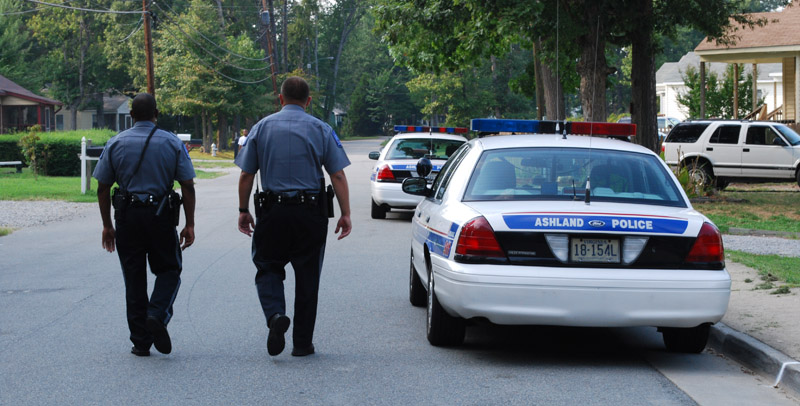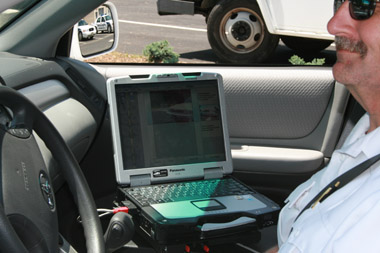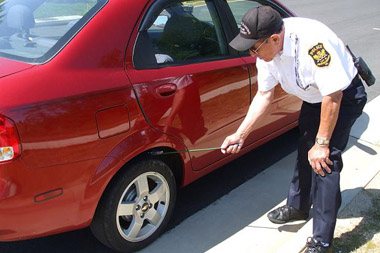 Courtesy of the Virginia Municipal League
Courtesy of the Virginia Municipal LeagueAppendix 10
Law Enforcement
One of the oldest and highest profile services provided by local government is law enforcement. Typically local police departments in Virginia are based in cities, some towns, and a few counties, while sheriff’s departments are based in most counties and some towns (although sheriffs manage the local jails in cities).
Ashland Police Courtesy of the Virginia Municipal League Courtesy of the Virginia Municipal League |
With easily recognizable uniforms and vehicles, local government law enforcement personnel are a constant presence in most communities. Unlike most other government employees, police are bound by law to behave in certain ways. For example, state law may require them to make arrests whenever they have probable cause to believe that a suspect has committed a domestic assault. Statutory or case law requires them to obtain search warrants before asking for evidence or contraband in certain situations and to advise suspects of their right to remain silent. Constitutional law affects their handling of protestors and demonstrations. A judge may order them to carry out some actions or to desist from some practices.
Most law enforcement activities can be divided into those that are reactive and proactive. Law enforcement personnel react to criminal activity that has occurred or is believed to have occurred in the community. Modern law enforcement also takes a proactive stance in terms of problem-oriented policing or community-oriented public safety (COPS).
Local law enforcement agencies often use crime statistics, neighborhood watch programs, and other information to allocate resources to address specific community needs. They enlist the assistance of citizens and other community resources such as social services agencies, fire departments, parks and recreation programs, and others to help identify and address symptoms that contribute to criminal or anti-social activities.
Most law enforcement activities are organized around three specific functions:
Traffic law enforcement Courtesy of the Virginia Municipal League |
Chalking tires Courtesy of the Virginia Municipal League |
Together these three functions are designed to ensure safe communities. Law enforcement agencies also work closely with prosecutors and court personnel, as well as public school systems and various social service agencies to address the core causes of criminal and anti-social activities.
Once apprehended, individuals suspected of, or convicted of, crimes enter local incarceration and detention facilities. These facilities are often separated into juvenile and adult areas. Many local detention facilities are operated under the authority of locally elected sheriffs. In Virginia there are also a growing number of regional complexes that are managed by separate regional authorities with their own professional detention management personnel. A board that includes the sheriffs of participating localities and other managers governs regional jails.